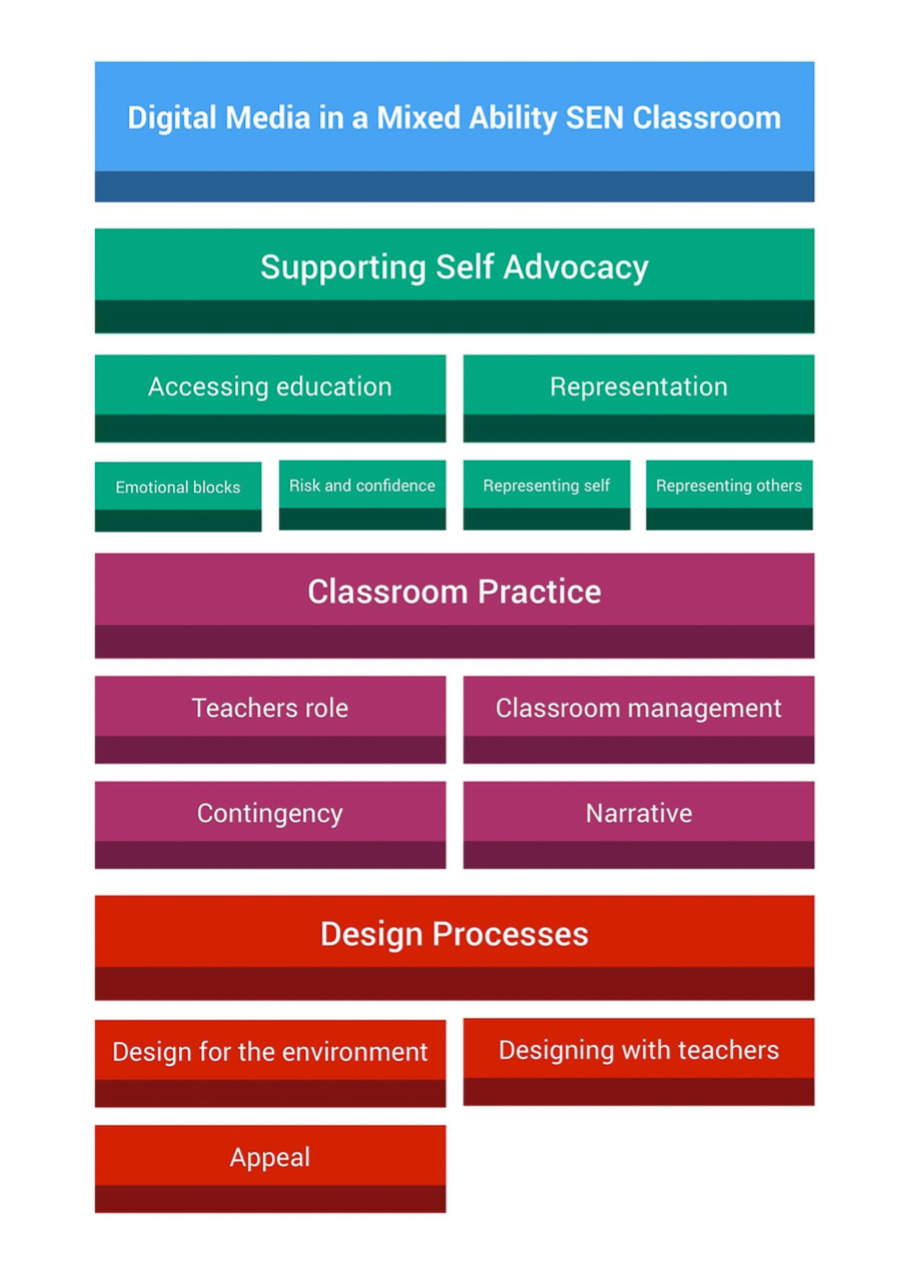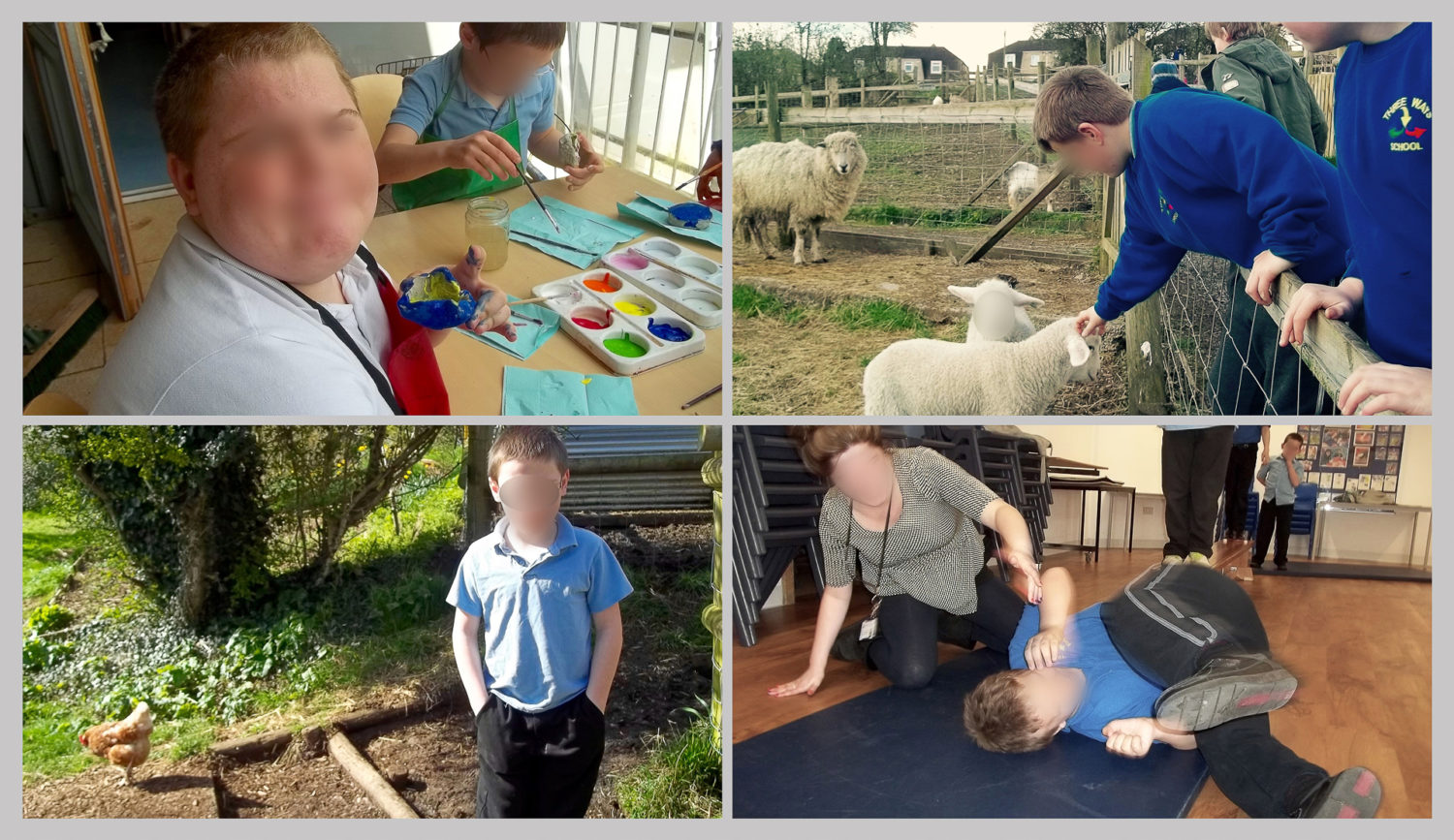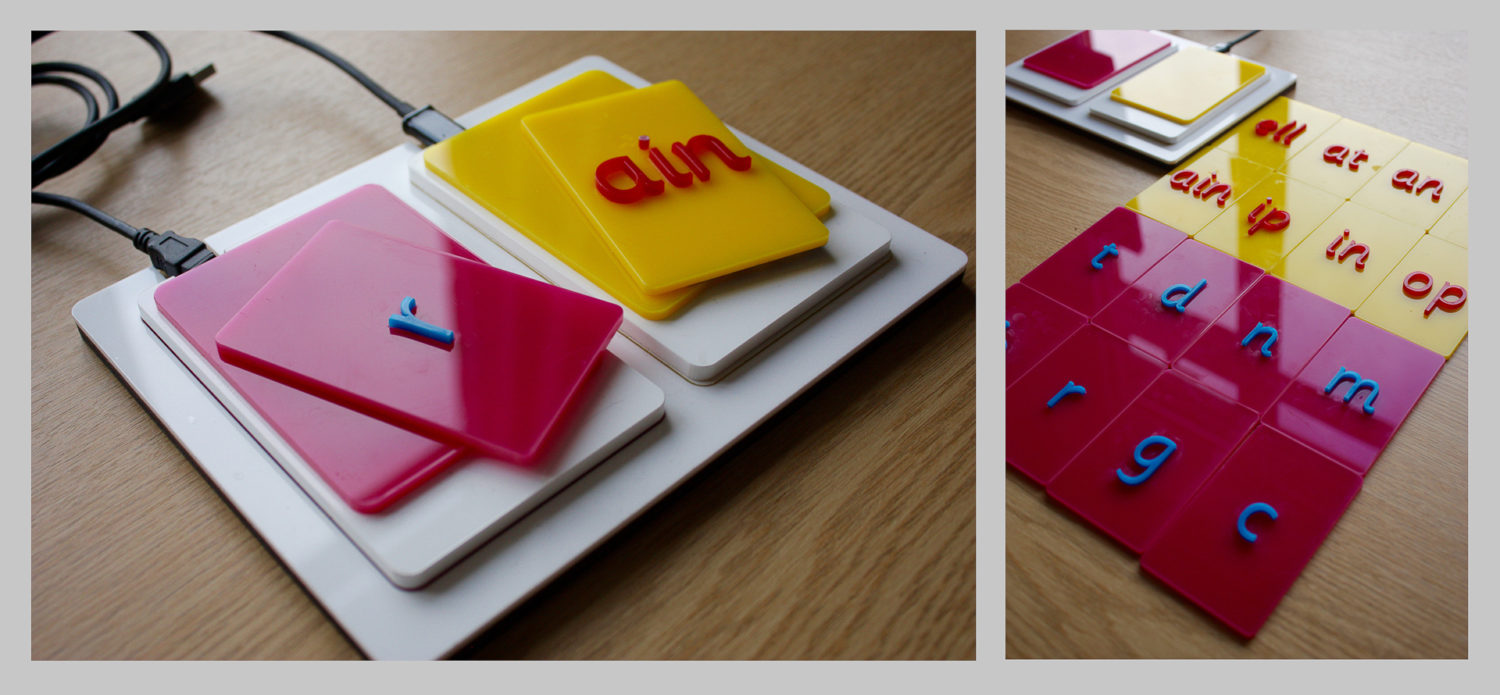My EPRSC funded MSc and PhD research was concerned with using participatory design methods for developing creative technologies within a UK Special Educational Needs school.
I embedded myself within a Special Educational Needs school in Bath for four years, working as a researcher, teaching assistant, and artist. During my PhD, I also worked on a joint research project at a special educational needs school in Newcastle with Culture Lab’s (Newcastle University) SIDE project (Social Inclusion through Digital Economies).
During my research, I used a variety of qualitative and quantitative methods and methodologies, giving me a firm grounding in the conceptual and practical applications of research methodologies within interaction design and the actual programming and engineering skills required for designing in these challenging environments.
Publications
2016
Digital Media in a SEN Classroom (Thesis)
Abstract
This thesis presents a series of design-led case studies concerned with the use of digital technology and the practice of interaction design for children within the context of UK special educational needs classrooms. It This thesis presents a series of design-led case studies concerned with the use of digital technology and the practice of interaction design for children within the context of UK special educational needs classrooms. It explores the use and development of accessible digital systems to support groups of students who have a range of special educational needs. Working with groups of mixed ability students has found to be the most typical situation for teaching in the participant schools and is a rich but underexplored area of concern for interaction design research. This thesis presents detailed accounts and grounded analysis of four embedded, design-led, case studies in two UK special needs schools. It makes three main contributions to the community of researchers, designers and educational practitioners who are concerned with the use of digital technology with children and more specifically working within the field of interaction design for children with special educational needs. These contributions are: A set of design guidelines developed through an analysis of the detailed and thorough accounts of four embedded design-led research projects in two special needs school in the UK. A discussion of the development of the research approach taken in this thesis. A set of design personas of teaching staff interaction designers are likely to encounter when working in a UK special needs school.
2014
Abstract
This paper describes our Experience-Centered Design (ECD) enquiry into the current and potential role of digital photography to support interpersonal expression in a class of children (aged 11-15 years) at a mixed special education needs school. Presented as a case study, we describe five classroom-based creative workshops that engaged pupils with a broad range of complex special needs, and classroom staff. From these workshops, we generated a set of qualitative considerations for the design of digital photographic tools to support interpersonal expression in this setting. Additionally, we present the evaluation of a photo-sorting system we developed in response to our workshop findings and evaluated in the school over a period of 12 months. Our case study demonstrates how an ECD approach can guide a creative interaction design process in a special education needs setting, supporting interaction designers in empathising and responding pragmatically to the complex and dynamic interactions at play between the stakeholders. We further discuss design research approaches to user groups in such settings, and consolidate our insights about conducting research through design for social inclusion.
2013
Abstract
This paper describes our Experience-centered Design (ECD) inquiry into the current and potential role of digital photography to support interpersonal communication and expression in a class at a mixed special education needs school. Presented as a case study, we describe five classroom-based Creative Photography workshops that engaged pupils with a broad range of complex special needs, along with classroom staff. We further describe how, from these workshops, we generated a set of qualitative considerations for the design of digital photographic tools to support interpersonal communication and expression in this setting. Additionally, we present the preliminary evaluation of a photo-sorting tool that we developed in response. Our case study demonstrates how an ECD approach can guide an interaction design process in a special education needs setting, supporting interaction designers in understanding and responding pragmatically to the complex and dynamic interactions at play between the stakeholders.
Abstract
In the past decade a number of approaches have been proposed for conducting technology based design research with children with special educational needs in social and school settings. This body of literature offers a range of approaches to engaging students in a participatory design process. Recent literature has concerned the ways in which children’s ideas can be interpreted and brought into the design process and how research methods developed for typically developing children can be adapted for use with children with special educational needs.
Abstract
An argument for the importance of developing interactive systems that support self-advocacy for children is made with an emphasis on an approach that acknowledges the social realities of a school context and the limitations of technical interventions for social change. The researchers work on Digital Story telling as a means of promoting confidence, creativity and communication for children with special educational needs is then given.
2012
Abstract
Conducting longitudinal interaction design research within an institution that caters for young people with special educational needs (SEN) is a challenging but fascinating task. This paper aims to elucidate some of the key factors that have emerged from conducting such research with students and staff in Three Ways School in Bath, UK. The various institutions and people involved are detailed as well as the most salient points for consideration when undertaking studies in the SEN context. The points are then reflected upon drawing on concrete examples from the researchers’ own experiences. These experiences, both positive and negative, may be of use to other researchers and practitioners when conducting research studies in the SEN classroom context and other potentially sensitive contexts.




